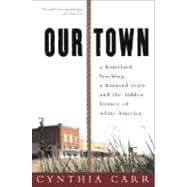
What is included with this book?
| "A Veil Hangs Over This Town" | |
| My Marion | p. 3 |
| The Survivor's Story | p. 13 |
| "We Never Recovered" | p. 28 |
| Things I Didn't Learn in School | p. 48 |
| Marion's Hooded Order | p. 59 |
| The Three P's | p. 77 |
| "They Were Strangers to Me" | p. 97 |
| "No Likelihood of Conviction" | p. 128 |
| Good History/Bad History | |
| The Ironies | p. 153 |
| The Ancestors | p. 170 |
| Underground | p. 178 |
| Weaver | p. 189 |
| A Riot Goin' On | p. 199 |
| The Auxiliary | p. 225 |
| "This Assemblage of Pseudo-Americans" | |
| In His Bulletproof Vest | p. 239 |
| "The White Has Fell" | p. 253 |
| "Nowhere Else to Turn" | p. 276 |
| God Forgives/The Brotherhood Doesn't | p. 286 |
| "Truth Does Not Bring Back the Dead but Releases Them from Silence" | |
| The Reconcilers | p. 299 |
| Brothers and Sisters | p. 323 |
| What Aunt Ruth Said | p. 346 |
| A Few Bad Apples | p. 353 |
| The Snake Under the Table | p. 369 |
| Telltale | p. 379 |
| The Return of Oatess Archey | |
| History-Maker: The Primary/Spring 1998 | p. 391 |
| Unity Day: The Election/Fall 1998 | p. 407 |
| Poor Marion: The Rally/July 1999 | p. 424 |
| Truth and Reconciliation | |
| Four Days in August | p. 441 |
| In the Picture | p. 455 |
| Epilogue | p. 463 |
| Notes | p. 465 |
| Bibliography | p. 484 |
| Acknowledgments | p. 488 |
| Index | p. 490 |
| Table of Contents provided by Ingram. All Rights Reserved. |
The New copy of this book will include any supplemental materials advertised. Please check the title of the book to determine if it should include any access cards, study guides, lab manuals, CDs, etc.
The Used, Rental and eBook copies of this book are not guaranteed to include any supplemental materials. Typically, only the book itself is included. This is true even if the title states it includes any access cards, study guides, lab manuals, CDs, etc.
Excerpted from Our Town: A Heartland Lynching, a Haunted Town, and the Hidden History of White America by Cynthia Carr
All rights reserved by the original copyright owners. Excerpts are provided for display purposes only and may not be reproduced, reprinted or distributed without the written permission of the publisher.